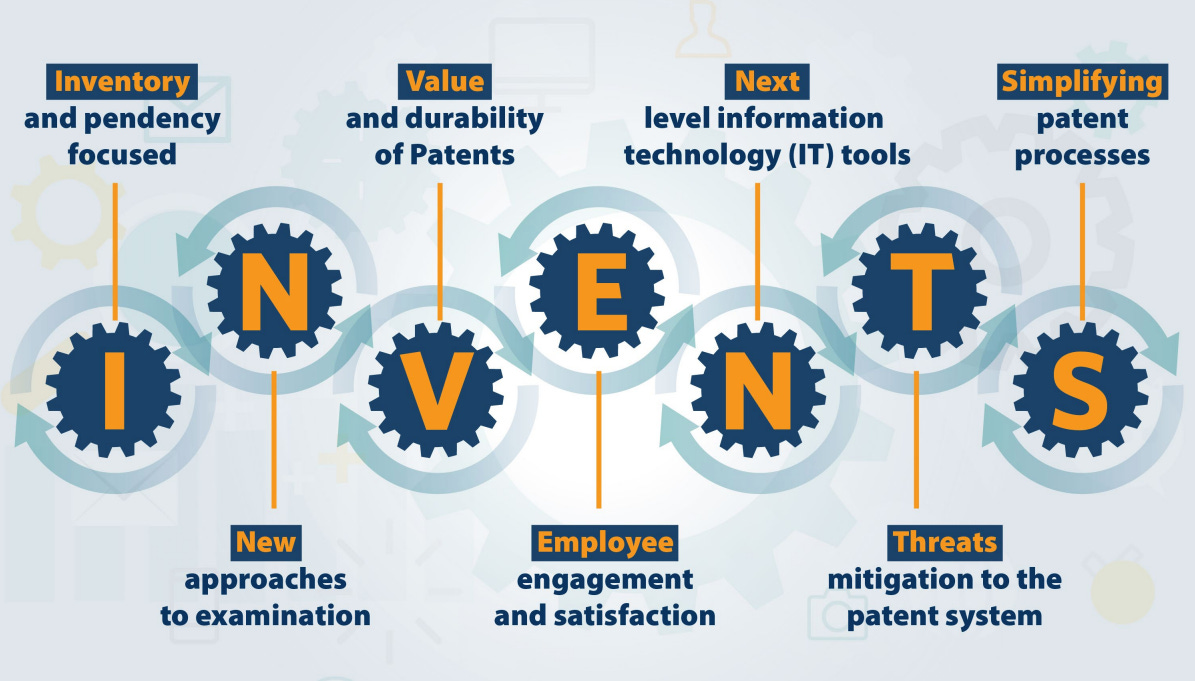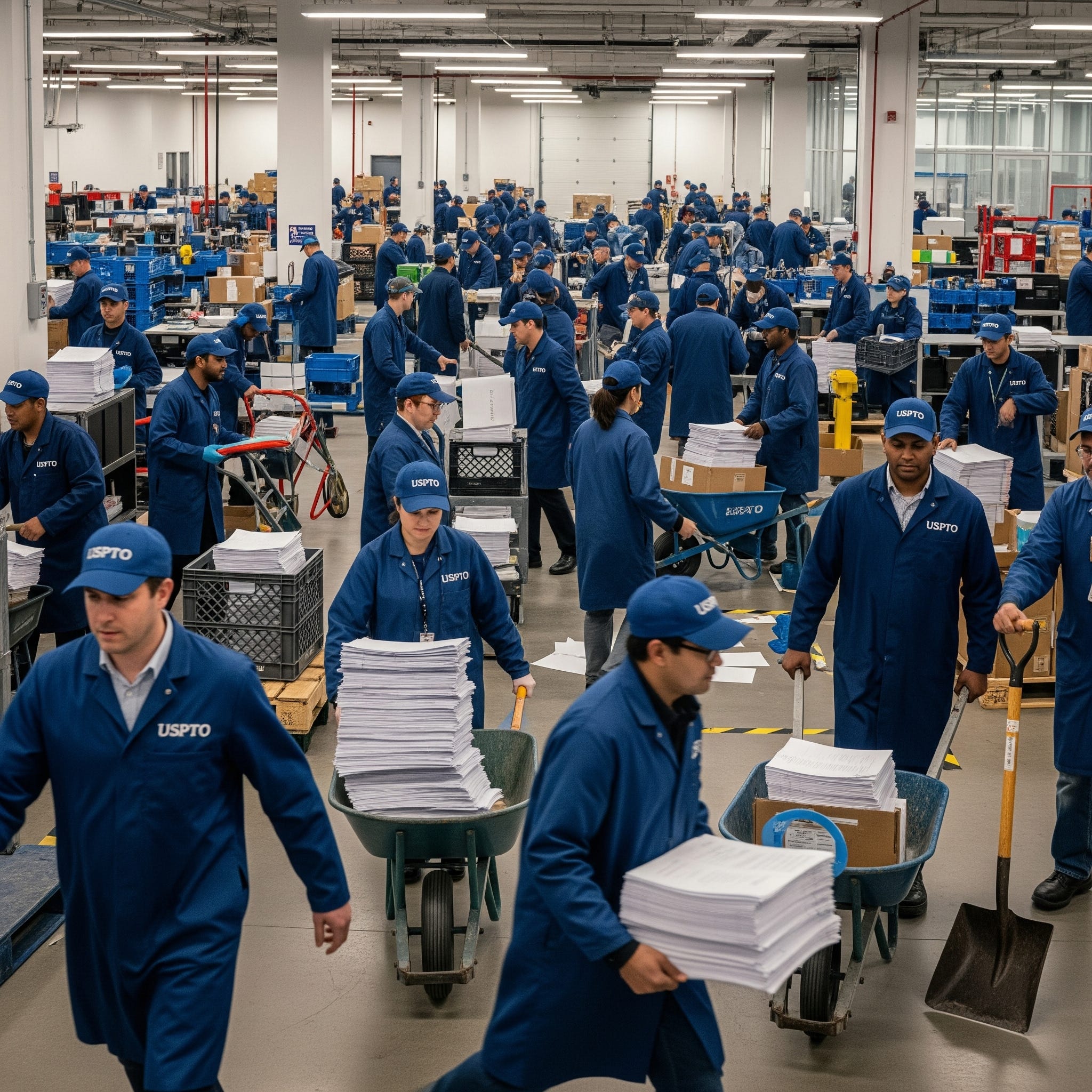ICYMI: 'Patent Hour' from Late-May Discusses USPTO Inventory and Pendency
The Office has been fighting the 'backlog' even before the hiring unfreeze
During a recent USPTO Hour webinar in May, Deputy Commissioner for Patents, Jerry Lorengo, offered insights into the agency's multifaceted approach to tackling the growing inventory of unexamined patent applications and the resulting increase in pendency times. The webinar underscored the USPTO's core mission: to "provide timely and durable patentability determinations" (3:59). Unsurprisingly, the speakers mostly avoided the word “backlog.”
The Core Challenge: Filings Outpacing Capacity
The webinar (video and slides now available) began by defining the key terms at the heart of the issue:
Inventory: The volume of new applications awaiting examination (slides, p. 4).
Capacity: The USPTO's ability to process patentability decisions at a certain rate (p. 4).
Pendency: The timeliness of those patentability decisions (p. 4).
The fundamental problem, as outlined by the speakers, is that examining capacity has not kept pace with the influx of new applications.
From calendar year 2021 through 2024, utility patent filings saw a nearly 4% increase, while the total unexamined inventory grew by over 21% (p. 5). Design patents tell a similar story, with filings increasing by almost 10% and the corresponding unexamined inventory jumping by over 23% (p. 6).
The panelists explained that the USPTO's approach is encapsulated in the "INVENT" acronym, which stands for:
Inventory and pendency focused
New approaches to examination
Value and durability of patents
Employee engagement and satisfaction
Next level information technology tools
Threats mitigation to the patent system
Simplifying patents processes (1:34-2:04)
This framework guides the agency's efforts to enhance operational efficiency and the quality of issued patents.

Deputy Commissioner Lorengo explained the dynamic relationship between these factors, stating, "if our filings are coming in at a faster rate than we're actually examining them... then our inventory will continue to grow" (6:45).
This growing inventory directly leads to longer pendency, meaning innovators and businesses must wait longer for crucial patentability decisions (6:51).
The ultimate goal is to achieve a state where the output of examined applications "exceeds incoming filings," which will in turn "drive down [] inventory" (7:02, 7:09).
A significant contributor to this imbalance has been a relatively flat level of examiner staffing from fiscal year 2015 to 2024, a period during which examiner attrition often offset new hires (p. 8).
A Multi-Pronged Strategy to Build Capacity
To address this challenge, the USPTO is implementing a series of initiatives focused on building its examining capacity. These efforts are not solely centered on hiring—because there was a hiring freeze in May—but also on optimizing the use of existing talent and resources.
According to Deputy Commissioner Lorengo, the strategy involves "leveraging our existing staff... increasing retention... [and] increasing examination staff" (8:26, 8:44, 8:51).
Key initiatives highlighted include:
Prioritizing Examination: The USPTO is refocusing its efforts to have examiners "focus on reducing inventory and pendency through examination" (10:09). This includes leveraging experienced primary examiners on examination and having Supervisory Patent Examiners concentrate on "coaching and mentoring of junior examiners" (10:21).
Incentivizing Output: A new "Pendency Balance Award Pilot" was launched to offer a "monetary bonus for additional examination in areas of highest inventory" (11:58). This program, which complements existing production awards, has already attracted over 2,400 voluntary participants and resulted in the examination of more than 4,300 applications (12:03, 12:11). Crucially, the speaker noted that a "quality review of every application" is part of this program to ensure the durability of patents is not compromised (12:17).
Strategic Reassignments: With a federal hiring freeze in effect at the time (May 2025), the USPTO was looking inward. The agency established a program for employees in other roles who have prior examination experience to "voluntarily return to the examining corps" (12:53). To date, this has resulted in 66 voluntary examiner reassignments and 24 supervisory patent examiner reassignments (p. 13).
Investing in AI-Enhanced Tools: The USPTO is actively "investing in AI enhanced tools for examination" (9:09). The speakers mentioned that these tools can "help search... more effectively parse an application" and assist in evaluating the final work product (9:15, 9:21, 9:27).
Early results of these combined efforts appeared positive. A comparison of production units between fiscal years 2024 and 2025 shows recent gains, with the goal being to "continue to outstrip last year's progress" (11:32).
Data also indicates that the unexamined inventory peaked in January 2025 and is now on a downward trend (p. 14).
Of course, in a significant development following the webinar, the USPTO announced in mid-June that it has resumed hiring patent examiners after a six-month freeze. These new positions are designated as non-remote and fall outside the employee bargaining unit.
Effects for Stakeholder
For patent attorneys, IP owners, and inventors, the USPTO's initiatives present a mixed bag of potential benefits and lingering concerns.
The most significant benefit is the prospect of reduced patent pendency. A more efficient examination process means quicker decisions, allowing businesses to secure IP protection faster, attract investment, and bring innovations to market sooner.
The focus on "timely and durable patentability decisions" is a clear positive for all stakeholders who rely on the patent system (p. 3). The introduction of new monetary incentives for examiners could accelerate the examination of applications in the most backlogged art units.
However, a primary concern is whether the push for speed and efficiency will compromise patent quality. While the speaker repeatedly emphasized the commitment to high quality and durability (8:31, 12:22), the pressure to reduce inventory could, in practice, lead to less thorough examinations. The risk is the issuance of patents that may not withstand scrutiny in litigation or post-grant proceedings, ultimately undermining their value.
Another risk lies in the agency's reliance on current staff and reassignments amidst a hiring freeze (24:55). While these are pragmatic short-term solutions, they may not be sustainable.
The speakers acknowledged that "you cannot hire your way out of an inventory situation," but also noted that the freeze "did hit those plans" for hiring (25:41, 25:07).
The cautious embrace of AI also brings its own set of risks, including the potential for bad actors to use AI to generate "fraudulent applications," a threat the USPTO is actively monitoring (37:48, 37:54).
Conclusion
The USPTO is confronting its inventory and pendency challenges with a clear-eyed and multi-faceted strategy. By prioritizing examination, incentivizing productivity, reallocating internal talent, and cautiously integrating AI tools, the agency is showing early signs of reversing the trend of a growing backlog.
The commitment to maintaining quality alongside efficiency is a constant refrain at the USPTO. For IP professionals and innovators, these efforts could lead to a more responsive and predictable patent system.
Yet, it is wise to remain observant of how these initiatives unfold, particularly regarding the long-term sustainability of the workforce and the unwavering need for high-quality, durable patents that form the bedrock of innovation.
The webinar assured stakeholders of ongoing communication, stating, "we have to thoughtfully and actively communicate at a regular cadence and that is what we're going to do" (28:11). IP owners and patent practitioners will be listening!
Disclaimer: This is provided for informational purposes only and does not constitute legal or financial advice. To the extent there are any opinions in this article, they are the author’s alone and do not represent the beliefs of his firm or clients. The strategies expressed are purely speculation based on publicly available information. The information expressed is subject to change at any time and should be checked for completeness, accuracy and current applicability. For advice, consult a suitably licensed attorney and/or patent professional.





